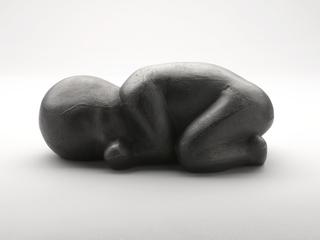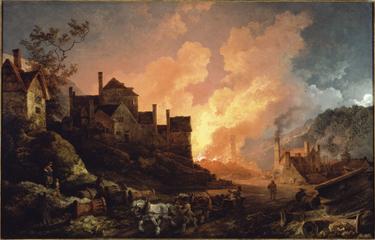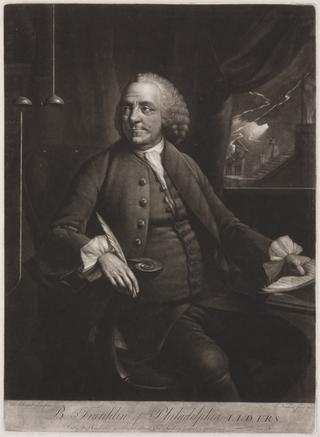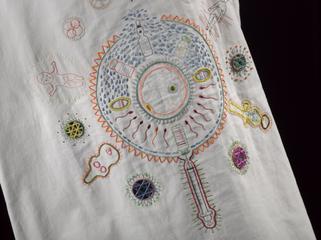
Harvey demonstrating to King Charles I his theory of the circulation of the blood, print, London, England, 1851




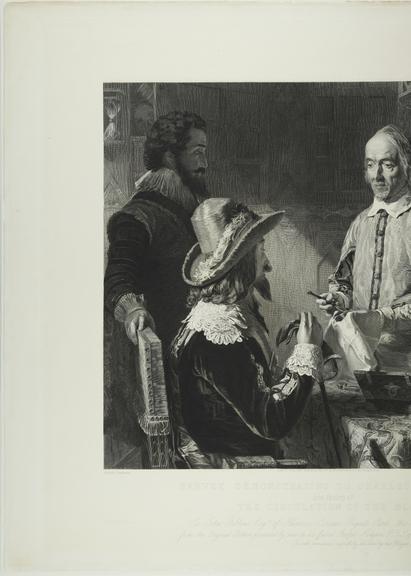
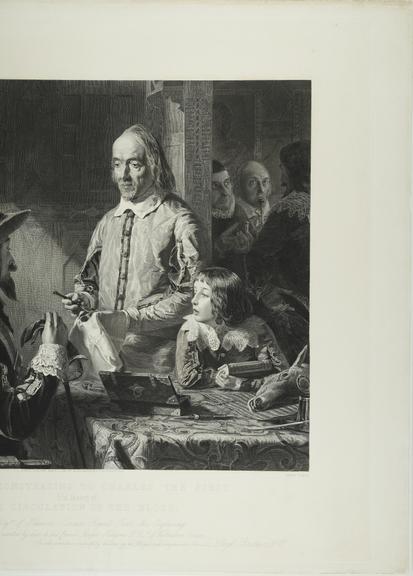

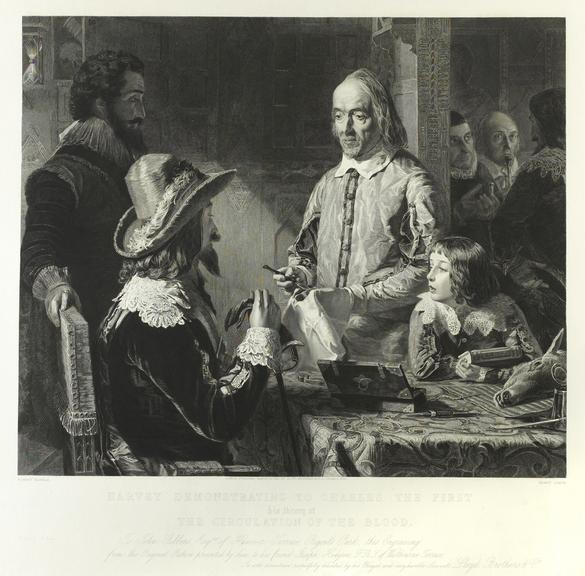
Mezzotint, William Harvey demonstrating to King Charles I his theory of the circulation of the blood, by H Lemon after R Hannah, issued Lloyd Bros 25 March 1851
The circulation of the blood through the body was discovered by William Harvey (1578-1657), an English physician. He is shown here demonstrating his theory to his patron, Charles I (1600–1649), King of England. Harvey was Charles I’s personal physician and the king took a great interest in Harvey’s researches. Charles I’s patronage meant that Harvey had the time and more importantly the money to conduct his experiments. Harvey announced his discovery in De Motu Cordis in 1628, which was also dedicated to Charles.
The original oil painting imagines a scene between Harvey and his patron. It dates from 1848 and is by Robert Hannah (1812-1909), a British artist. Harvey’s achievement was still being celebrated over 200 years after his famous discovery.

